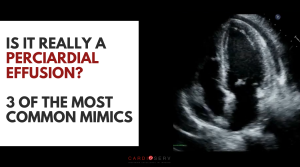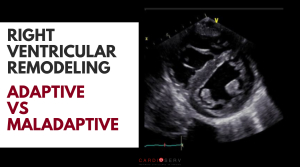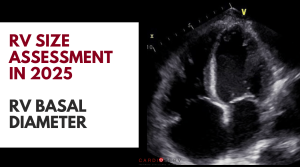Last Updated on January 30, 2024 by Hannes van der Merwe
Today is Mesothelioma Cancer Awareness Day. Check out our blog on the Mesothelioma Cancer Alliance and read the story of a survivor while learning more about the MCA, and how they help. We know many of our readers work in the world of echocardiography so we will share how echo aids in mesothelioma diagnosis. This week, we have partnered with the Mesothelioma Cancer Alliance and David Haas has been kind enough to write this article for our blog.
ECHOCARDIOGRAPHY AIDS IN MESOTHELIOMA DIAGNOSIS
Asbestos use continues to decline as further information about the serious physical effects of the toxin becomes apparent. The hope is that with less asbestos used worldwide, fewer people will receive a harrowing mesothelioma cancer diagnosis. However, the latency period of this cancer is anywhere from ten to fifty years, so it is difficult to know how many people are unknowingly exposed to asbestos. Mesothelioma typically impacts the lungs, heart, and abdominal cavity and symptoms often mimic more common diseases, which complicates a proper mesothelioma diagnosis. There are less than fifty people diagnosed with pericardial mesothelioma each year, and unfortunately many of those diagnoses occur post-mortem.
While researchers continue improving their diagnostic capabilities, it’s important to remain hopeful that further regulations against asbestos use will eventually drive down the number of diagnoses. Echocardiography is proving to be a crucial first step in determining whether or not someone is suffering from pericardial mesothelioma.
MESOTHELIOMA
Malignant mesothelioma is a rare type of cancer that occurs in the thin layer of cells lining the body’s internal organs, known as the mesothelium. There are three types of mesothelioma:
- Pleural (70%)
- Peritoneal
- Pericardial
PERICARDIAL MESOTHELIOMA
Pericardial mesothelioma develops as a result of asbestos exposure. Typically, exposure occurs when airborne fibers are inhaled or ingested. The fibers then become lodged in the lining of the the pericardium, where symptoms may occur over several decades. It is not clear how the fibers reach the heart.
Unfortunately, symptoms of pericardial mesothelioma, which may include arrhythmia, chest pain, and effusion, are often indicators of other ailments. Due to the commonality of these symptoms, it’s often difficult to precisely diagnose this form of the disease. Pericardial mesothelioma is commonly misdiagnosed as coronary artery disease, tuberculosis pericarditis, or another heart-related cancer such as synovial sarcoma. If one is diagnosed with pericardial mesothelioma the prognosis is very daunting, and oftentimes life expectancy is six months or less.
METHODS OF DIAGNOSIS AND ECHOCARDIOGRAPHY
Echocardiography is used to look for the presence of pericardial effusion. If an effusion is detected, a pericardiocentesis can be performed and the fluid sent to the lab to test for certain types of cancer. Let me allow CardioServ to jump back in for a moment:
“Remember, whenever pericardial effusion is present it is important to rule out tamponade.
- Determine the largest diameter size of the effusion at end-diastole
- Presence of RV or RA chamber collapse during diastole
- IVC collapsibility for <50% collapse during inspiration/sniff
- Respiration variation of the tricuspid inflow Doppler velocities >60%
- Respiration variation of mitral inflow Doppler velocities >30%
- Diminish or reversal of diastolic forward flow during expiration of hepatic vein Doppler
Read our recent post on 6 Clues to Determining Presence of Cardiac Tamponade to learn how to correctly perform these measurements.”
As the medical community begins to understand more about mesothelioma, new detection tests are becoming available.
- The HMGB1, or High Mobility Group Box Protein 1 blood test, would be beneficial when combined with an echocardiogram
- HMGB1 is a biomarker released by cells damaged due to asbestos fibers
- In clinical trials, HMGB1 has shown some success as an accurate way of determining if a patient was exposed to the carcinogen
- It is also thought that HMGB1 continues to be released as mesothelioma develops
- This test can distinguish between people who have been exposed to asbestos and those that haven’t, leading to a more proficient and precise diagnosis.
WHAT THE FUTURE HOLDS FOR MESOTHELIOMA RESEARCH
Early detection plays a key role in a mesothelioma patient’s prognosis. Due to the difficulty of determining if someone is suffering from pericardial mesothelioma, it is important for that person to get checked out immediately if symptoms begin to occur. While there currently is no cure, new methods are being developed to better diagnose mesothelioma and new treatment options are becoming available to improve a patient’s life expectancy and overall quality of life. Clinical trial opportunities can be found here.

David Haas, Community Outreach Coordinator
Mesothelioma Cancer Alliance
Related Blogs:
6 Clues to Determining the Presence of Cardiac Tamponade
Industry Spotlight: Mesothelioma Cancer Alliance
Reference
http://ascopubs.org/doi/abs/10.1200/JCO.2017.35.15_suppl.e20027






